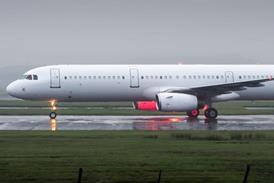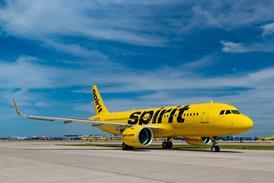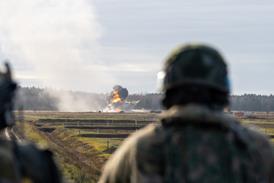Labour concessions and other recent cost-cutting achievements by US majors just may not be enough to cover the rising cost of oil.
Continental Airlines for one has said that it still faces major losses despite recent agreement by its pilots and other unions to trim $500 million from its annual payroll, while Delta Air Lines warned again in March that a bankruptcy filing looms despite the $2.3 billion in cuts achieved last year.
Delta had proclaimed itself saved for the time being after its pilots gave it nearly $1 billion in savings, but now says it is low on cash and cannot find any willing lenders. It is so heavily mortgaged that it may not be able to sell its two wholly owned regional jet operations despite the public interest of a willing buyer.
With crude oil nearing $53 a barrel, no relief predicted by the US Energy Information Administration and with jet fuel at $1.50 a gallon by mid-March, airlines were forced to rethink their 2005 assumptions of $1.22 a gallon. Delta says its liquidity would be challenged even at prices of $42 a barrel. At this rate, JP Morgan credit analyst Mark Streeter estimates unrestricted cash would fall below $1 billion by year-end, down from $1.8 billion at the end of 2004. It may need to seek waivers from GE and American Express, which arranged financing in December at about the time that the Air Line Pilots Association cleared its cuts.
Delta says in its Securities and Exchange Commission filing that its main Delta Connection subsidiaries, Atlantic Southeast (ASA) and Comair, would be subject to mandatory repayment under the GE/Amex deal even if a sale could raise $800 million on the high end, as Calyon Securities USA analyst Ray Neidl estimates. An executive of SkyWest airlines says the Utah-based regional had discussed a purchase, but the limited value of the units seems to make spin-off unlikely. Delta spent $1 billion on ASA in 1999 and $2.4 billion to buy out Comair in 2000, taking a $1.9 billion write-down on them last quarter. That makes the proceeds of any sale "expensive cash", says UBS analyst Robert Ashcroft.
In addition to the oil price shock, legacy carriers have seen revenues crimped by a fare simplification launched by Delta in January. Domestic unit revenues are rising at about 1% a month at best, estimated JP Morgan's Jamie Baker. Continental expects the lower fares to reduce annual revenue by $200 million, $50 million more than estimated. Worse, says the carrier, "our operating results may be affected by an even greater amount due to the expense of handling the additional passengers stimulated by the lowered fares". On a cash basis, it lost more than $3 million a day in January, Continental says.
The fuel spike has also forced other carriers to increase their targets for cost cutting, leading United Airlines to put off plans to emerge from bankruptcy reorganisation until year-end. It has renegotiated financing and reset earnings targets, even though the airline says it has four unidentified parties interested in financing its exit from bankruptcy. Still United has had to seek further cuts in employee pensions.
At Northwest Airlines, chief executive Doug Steenland says it may have to seek deeper cuts than the $950 million in wage-and-rule concessions it had targeted. The carrier has also given up plans for a modest 1-2% capacity increase this year.
So hungry for revenue had it become by spring that Northwest abandoned its long-established industry role as spoiler of proposed fare increases and instead twice initiated general fare increases. These fare hikes took, unlike the earlier increases that died when Northwest refused to go along.
Even with the fare increases in March, losses look huge, says AeroEcon consultant Dave Swierenga. United, with its bankruptcy power to force cuts, has a strong position, says consultant Bob Mann of consultants RW Mann & Associates. But he says: "For the rest, a consensual cost-cutting process is more difficult."
DAVID FIELD WASHINGTON
Source: Airline Business























